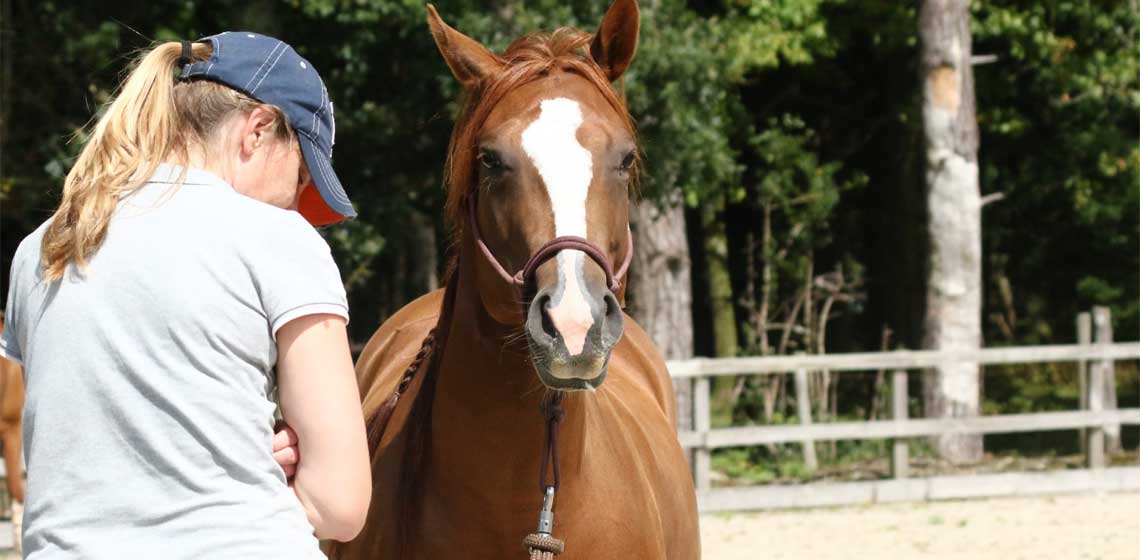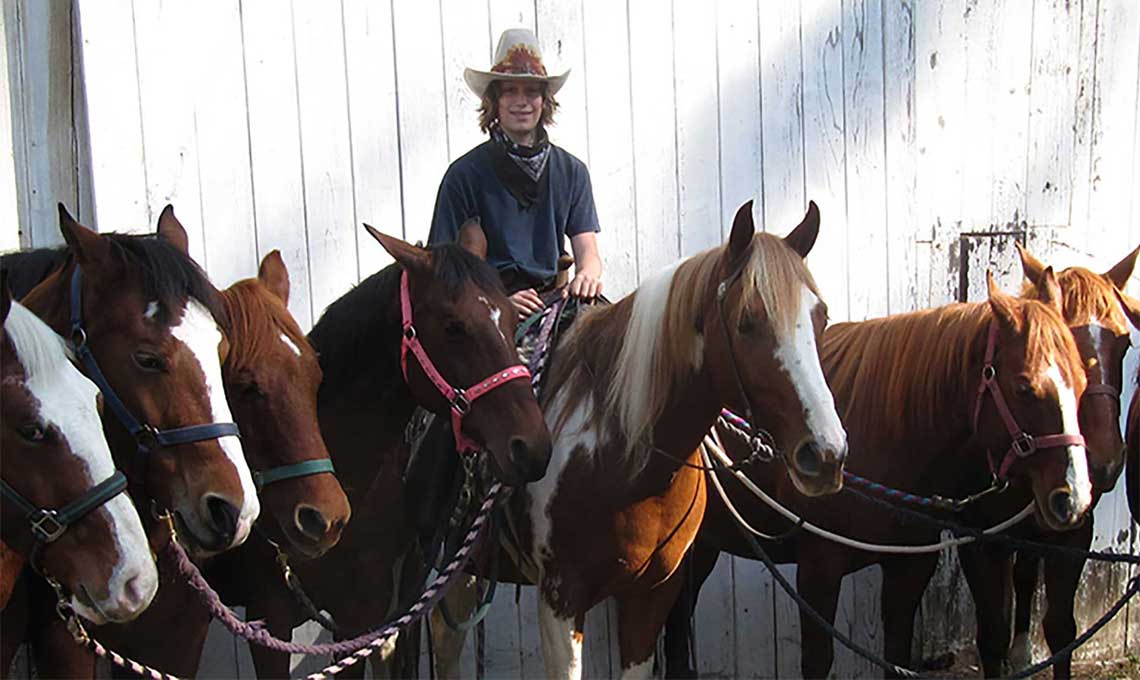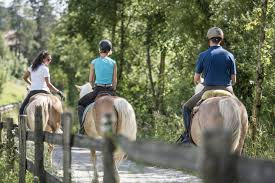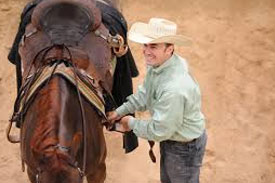Whether you’re a beginner or an old pro, you know that horseback riding is one of the most fun activities and best forms of exercise around. But have you ever thought of its potential as a form of therapy? Believe it or not, horseback riding has a tremendous amount of potential to help people, and has been successfully used as a part of therapy in everything from autism and cerebral palsy to post-traumatic stress disorder and drug and alcohol rehabilitation. Sound too good to be true? Don’t just take our word for it! Check out a few of our favorite reasons why we love horseback riding therapy.
It Helps you Manage Your Emotions
 If you’ve ever ridden a horse before, this probably sounds a little less unbelievable. Because horseback riding is a joint effort, a partnership between you and your horse, it has a way of removing your focus from yourself and your own problems to what’s happening in the moment. After all, you kind of have to. Because the moment you remove your attention from your horse and what you’re telling him to do, he’s going to start doing his own thing. That’s why focusing on a fun and intellectually stimulating activity can often be very therapeutic.
If you’ve ever ridden a horse before, this probably sounds a little less unbelievable. Because horseback riding is a joint effort, a partnership between you and your horse, it has a way of removing your focus from yourself and your own problems to what’s happening in the moment. After all, you kind of have to. Because the moment you remove your attention from your horse and what you’re telling him to do, he’s going to start doing his own thing. That’s why focusing on a fun and intellectually stimulating activity can often be very therapeutic.
Horses can Teach Social Skills
You know how sometimes you’d rather be with your horse than with people? Well, that’s not always a bad thing, especially since some forms of disability can make people feel isolated. Often, people with disabilities are bullied and ignored and this can lead to difficulties in connecting with others. Forming a bond with a horse, however, can be a lot easier and help build a person’s trust. Learning to interact meaningfully with their horse can, in turn, teach social skills that may make it easier to navigate relationships with people. Becoming part of the equestrian community also gives you access to a new group of friends with whom you have something in common!
Horses can Teach Patience
Yet another lesson you’ve absolutely learned if you’re a practiced rider! Horseback riding is an acquired skill and one that is only developed through a lot of time, practice, and patience. Because not only do you learn to be patient with yourself as you try to master a new skill, you also learn to be patient with your horse, who—as we all know—has a mind of their own! Building this patience over time can be therapeutic because it encourages the development of healthy coping mechanisms, like managing anger, stress, or frustration with yourself or with others. And no matter what we struggle with, we can all use a little more patience!
Horseback Riding Improves Balance
This can be especially vital for those with cerebral palsy or any other form of paralysis. And because horseback riding is accessible even to people who struggle with walking or spend most of their lives in a wheelchair, this can be an extremely important tool for creating a sense of autonomy and control over one’s body that some might lack in their everyday lives. It also strengthens your core, your hand muscles, and your legs in a way that more traditional forms of physical therapy might be unable to accomplish. So, when your body is constantly adjusting in response to the movements of your horse’s body, you’re actually stimulating muscle development that can be highly therapeutic.
Horseback Riding Gives You Confidence
 How did you feel when you finally learned to mount your horse without a struggle? To jump them with ease? To fluently speak horse-people lingo? You were proud, right? You felt great about yourself! Because you didn’t just accomplish one simple task—you’d unlocked a whole new world for yourself through the acquisition of a skill that you could develop and enjoy for years to come. (Plus, you’d found a new friend in your horse!)
How did you feel when you finally learned to mount your horse without a struggle? To jump them with ease? To fluently speak horse-people lingo? You were proud, right? You felt great about yourself! Because you didn’t just accomplish one simple task—you’d unlocked a whole new world for yourself through the acquisition of a skill that you could develop and enjoy for years to come. (Plus, you’d found a new friend in your horse!)
Horseback riding is unique in that respect because, unlike many other activities, it’s not accessible to everyone. Becoming a skilled rider isn’t about following a simple step-by-step guide and it’s not something you can achieve without earning. So, when you master a new element of horseback riding, you’ve acquired tangible proof that you can set a goal, meet it, and be good at it. And no matter what we struggle with in life, the power of that “I can do this!” feeling is both universal and priceless.
So, whether you’re a newbie looking to learn a new skill or an experienced rider who could encourage a friend, it’s important to remember that horseback riding has value beyond simply being fun. Through the acquisition of new skills, the improvement of balance and motor control, and the development of confidence and social skills, horseback riding can be a valuable form of therapy with a unique power to change lives.





 This might sound similar to the first point, but I promise it’s a separate thing! Because even once you allow yourself to accept and acknowledge any awkwardness you might feel, it’s still important to take your time. Begin by taking horseback riding lessons from an experienced rider or trainer and adjust your expectations to fit your starting point. Just like you won’t experience that storybook connection with your horse instantly, you also won’t absorb a lifetime of riding lessons overnight. So, even if you want to be galloping majestically through an open field, realistically, you’ll need to start off in a riding ring or an arena.
This might sound similar to the first point, but I promise it’s a separate thing! Because even once you allow yourself to accept and acknowledge any awkwardness you might feel, it’s still important to take your time. Begin by taking horseback riding lessons from an experienced rider or trainer and adjust your expectations to fit your starting point. Just like you won’t experience that storybook connection with your horse instantly, you also won’t absorb a lifetime of riding lessons overnight. So, even if you want to be galloping majestically through an open field, realistically, you’ll need to start off in a riding ring or an arena. There’s more to horseback riding than just the part where you’re actually riding the horse! At the beginning and end of every ride, it’s vital that you groom and tack up your horse. (If you’re wondering, “tacking up” means putting the saddle and bridle on your horse). Although grooming and tacking might not be as much fun as riding your horse, they serve a couple of important purposes. On one hand, they benefit your horse’s health by providing necessary warming up and cooling down periods. And on the other hand, as a fun bonus, they provide a special opportunity for you to bond with your horse.
There’s more to horseback riding than just the part where you’re actually riding the horse! At the beginning and end of every ride, it’s vital that you groom and tack up your horse. (If you’re wondering, “tacking up” means putting the saddle and bridle on your horse). Although grooming and tacking might not be as much fun as riding your horse, they serve a couple of important purposes. On one hand, they benefit your horse’s health by providing necessary warming up and cooling down periods. And on the other hand, as a fun bonus, they provide a special opportunity for you to bond with your horse.